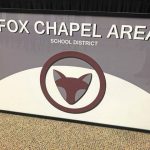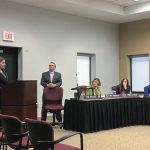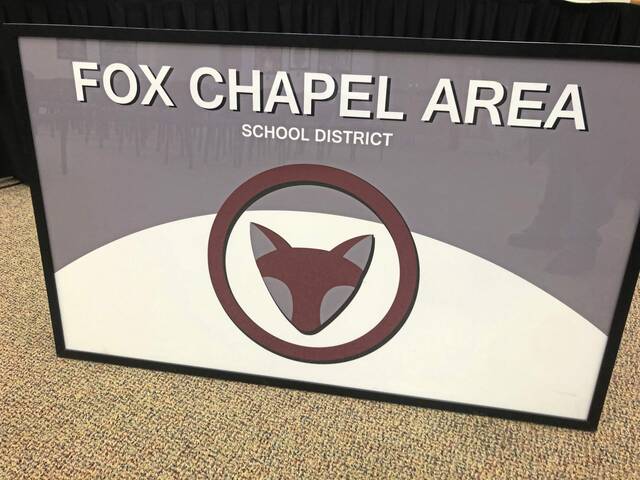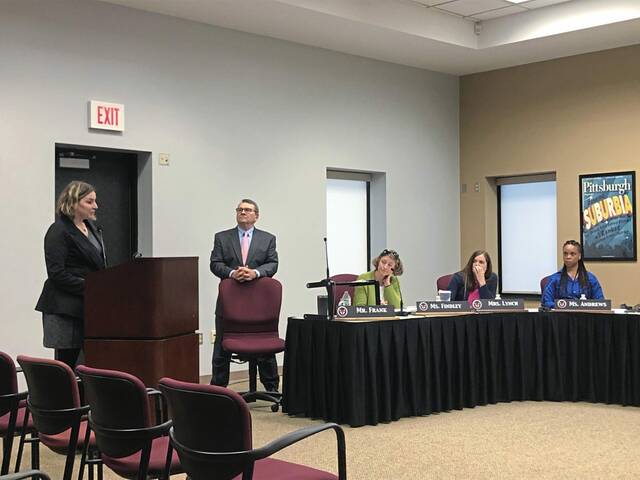Fox Chapel Area School Board gives prelim approval to 1.5% property tax hike


Share this post:
The Fox Chapel Area School Board has given preliminary approval to a 2022-23 budget that contains a 1.5% tax increase.
The spending plan would raise the millage rate by 0.3019 mills. The overall tax hike is expected to produce about $1.07 million in additional revenue for the district.
The current millage rate is 20.1269 mills, according to Allegheny County Treasurer’s Office. The proposed new rate would be 20.4288 mills.
The school district anticipates an increase in total assessed value for the 2022-2023 school year largely because of the addition of new properties onto the tax rolls, said school district spokeswoman Bonnie Berzonski.
For every $100,000 in assessed value, a property owner would pay $30 more in property taxes a year, according to the district.
The current median home value in the school district is $217,800. School district officials estimate that will rise to $224,000.
Board members unanimously approved the preliminary spending plan on May 9.
It is scheduled to formally adopt the budget June 13.
The board in January pledged to keep any tax increase to within an inflation-based state limit.
Act 1, passed in 2006 to provide property tax relief, sets a tax cap for school districts to cover normal inflationary costs and still pass a balanced budget without exceeding the tax-hike cap. In Fox Chapel’s case, the index for next school year is 3.4%, or 0.6843-mill.
There are no cuts to programs or staffing in the budget.
Projected revenues were listed at about $109.3 million with expenditures at $111 million, a projected $1.7 million deficit to be covered by reserve funds.
The district raised taxes for the current school year’s budget by 1.3%.
The board plans to transfer $2 million from the general fund to the capital reserves fund to cover a Hartwood Elementary HVAC and lighting upgrade project and turf replacement for the high school baseball, softball and multipurpose fields.
Board member and treasurer Eric Hamilton said the $2 million transfer is the main reason for the budgetary deficit, but it boosts the total fund for capital projects to about $14 million.
“While we, on paper, look like we’re running a net negative operationally, we are balanced in this budget,” Hamilton said. “We already have many projects in line for how to spend that (fund). At least we begin to chip away at the backlog of things we really do need to keep our lights on, buildings warm and operating.
“I want to thank all the (people) and administration who are involved in getting that planning underway. In order to continue to do that funding, we’re going to have to keep looking at our expenses very closely so that we can have a margin to keep putting away more funds toward those needs.”
District officials also cited an 8% increase in health care premiums, 3% increase in both dental and vision, 8% increase in cyber and charter school tuition costs and a 6% hike in pension contributions as reasons for the tax increase.
Hamilton noted the real estate tax increases are lower than inflation numbers.
“We’re always looking for ways to bring that (tax increase) down, but had we not made some tough decisions in prior years, we would be in a much more difficult situation than we are,” Hamilton said.
Projected revenues include about $71 million in real estate taxes; little less than $9.4 million in Act 511 taxes, which can include earned income taxes; $21.6 million from state sources and $1.75 million from federal sources.
Expenses include about $66.74 million for instruction including salaries, benefits and supplies, $4.32 million for student support services including professional and technical services, $6.68 million for administration, little more than $9 million for operation and maintenance of plant services, $4.9 million for student transportation and $2.8 million for student activities.
District Business Manager Kimberly Pawlishak delivered a budget presentation at the May 2 meeting. She summarized the spending plan at the May 9 meeting prior to the board vote.
Pawlishak said the budget includes the use of $1 million in federal stimulus funds for summer learning programs, student and staff support services and the replacement of windows at Dorseyville Middle School.
She said budget numbers would be updated next month with state figures, such as the homestead property tax exclusion, gaming revenue and subsidies.
“Every year we have our proposed final budget using predicted totals from the prior year,” Pawlishak said. “In between proposed and final budget adoption, we do input those new actual allocations as we receive them. The state budget has not been passed yet. That is also typical. School district budgets are passed before state budgets are passed, so there are always some variations to revenues from budget to actual based on that state budget passage.”
The presentations and proposed budget are available for review via the district’s website, fcasd.edu, under the “Budget & Finances” tab.
Editor’s note: An earlier version of this story gave a dollar amount of the proposed tax increase that was based on the district’s current median home value. The final median value is yet to be determined. Also, percentages for the increased cost of health insurance premiums have been corrected.



